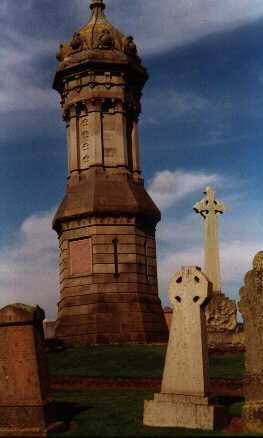FIBONACCI AND THE GOLDEN SECTION
This paragraph's links will take you to Dr Ron Knott's excellent University of Surrey website about Golden Section and the associated Fibonacci and Lucas number sequences, with their manyfold links to Nature and the Arts. The links below are to the informative biographical glosses on the University of St Andrews website.
In brief, Golden Section is the division of any length so that the shorter portion to the longer portion forms the same ratio as the longer portion does to the whole length. A classic golden section formation is the regular pentagram (5-pointed star), whose lines all intersect at their two points of golden section.
Fibonacci was Leonardo of Pisa (1175–1250), the mathematician who introduced Arabic numbers to Europe. His famous "Rabbit problem" involved the summative properties of the number series 1, 1, 2, 3, 5, 8, 13, 21 etc., which was named the "Fibonacci series" only much later by the 19th-century French mathematician Edouard Lucas. Lucas' name lives on in the associated "Lucas" summation series 1, 3, 4, 7, 11, 18, 29 etc. In both these series, as they progress, the ratio of successive terms comes ever nearer the exact value of golden section (0.61803398... or its inverse 1.61803398...).
Leonardo da Pisa himself didn't link Fibonacci numbers to golden section. One of the first people to do this in print was the Scots mathematician Robert Simson (in 1753, exactly between Bach's death and Mozart's birth). Simson hailed from the same Scottish village as Roy Howat (West Kilbride in Ayrshire). Simson's researches were based mostly on Euclid, whose Elements deal with golden section ("Extreme and Mean Ratio").
Edouard Lucas died in Paris in 1891, just a few years after Fibonacci numbers start to appear in Debussy's musical structures. One of Lucas's colleagues, Charles Henry, was the main æsthetic mentor to the Post-impressionist movement (notably to Seurat); during the 1880s and 1890s Henry wrote in arts and literary journals about the importance and function of ratios such as golden section.
In the 20th century golden section formed the basis of the architectural theories and practice of Le Corbusier (Charles-Edouard Jeanneret), and of influential æsthetic treatises by Matila Ghyka and Jay Hambidge. Ghyka's two-volume treatise Le nombre d'or (Paris, 1931) has a preface by Debussy's old friend Paul Valéry.
The photograph shown above of the memorial to Robert Simson, in West Kilbride cemetary, was taken by James Howat (Roy's late father, now buried in the same cemetary). The inscription on the plaque reads:
To Dr Robert Simson of the University of Glasgow, the Restorer of Grecian geometry and by his works the great promoter of its study in the schools. A native of this parish born 14 October O.S. 1687, died at Glasgow 1 October 1768 where rest his remains.
And buried learning rose
Redeemed to a new morn.
University of Surrey Golden Section / Fibonacci website |
 |